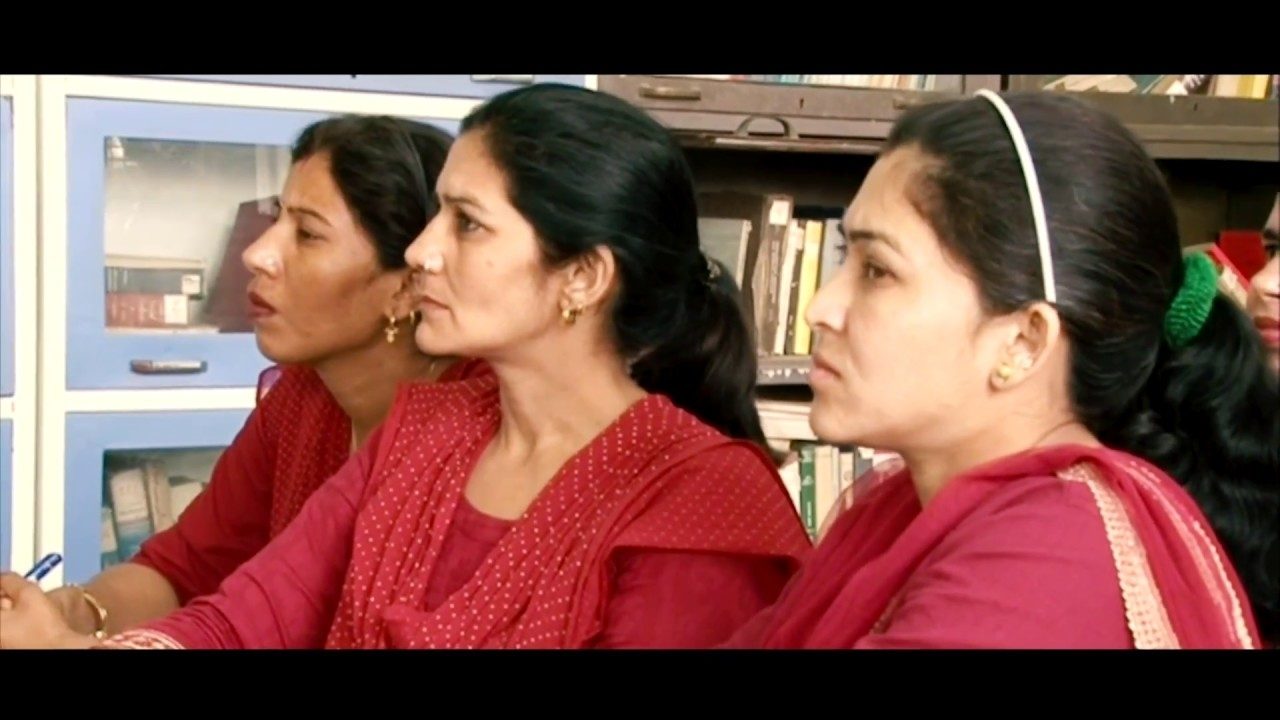
A ray of hope for primary health care delivery
Quiet winds of change are sweeping villages in two blocks of Jhajjhar district in Haryana where as part of their expanded role, Accredited Social Health activists (ASHAs) are assisting the health authorities in screening people in the community who are at high risk of getting a cardio-vascular disease.
Using a hand-held electronic device specially developed for this purpose, the ASHA’s have managed to visit people in their homes and detect undiagnosed cases of high blood pressure. She has also been able to motivate the people to visit the nearby primary health centre and get treatment.
Take for example,
Murti, a 59-year-old woman from Barhana, was identified with extremely high Blood Pressure for the first time when an ASHA worker visited her home. After much prodding by her, she went to the primary health care doctor for treatment. She is now taking regular treatment and her BP is within the normal range now.
The ASHAs are thoroughly enjoying their new role which builds on their training as health educators and promoters in their communities – the original role entrusted to them by the Government of India’s Ministry of Health and Family Welfare as part of the National Rural Health Mission in 2005. It has brought them respect and social acclaim.
Some of their traditional tasks include motivating women to give birth in hospitals, bringing children to immunization clinics, encouraging family planning (e.g. surgical sterilization), treating basic illness and injury with first aid, keeping demographic records, and improving village sanitation.
ASHAs are also meant to serve as a key communication mechanism between the healthcare system and rural populations. With the Government recognising the need to detect, screen and manage non-communicable diseases, the expanded role of ASHA’s cannot be over-emphasised. And that is where a small pilot initiated by the George Institute for Global Health in collaboration with the Post-Graduate Institute of Medical Sciences (PGIMS), Rohtak, shows that the ASHA’s can play a critical role in primary health care delivery.
There are many like Murti who were diagnosed with high blood pressure for the first time and are taking treatment. Considering that many people in rural areas do not know that they have blood pressure, this is indeed a big step forward.
Over a period of six months approximately 850 high-risk cases have identified and referred to the doctor. The screening by ASHA workers and referring high-risk cases of the doctor has resulted in what academics would call as task-shifting – while screening is done at the community level by the ASHAs, doctors are involved in the treatment. This ensures that doctors are not over-burdened as the task of screening shifts to the foot-soldiers in the village,
The involvement of the ASHA workers in health care delivery has not only resulted in many people understanding the risk of undiagnosed blood pressure and diabetes, it has also led to their economic and social empowerment.
“My relationship with my mother-in-law has improved considerably after I diagnosed her to be having hypertension and referred her to the doctor,” said an ASHA worker.
Another one recalled how removing the veil from their face or touching the hand of the elderly people was considered taboo in the villages before but after they took on the role of screening people with high cardio-vascular risk, all of this became a thing of the past.
Enabling the ASHA worker to play this expanded role with efficiency is a small hand-held electronic device which helps her maintain the case history of the patient, record their height, weight, blood pressure and sugar readings and calculates the risk. She refers the high-risk patients to the doctor and follows them up to ensure that they take tablets regularly. This risk-stratification based on patient’s individual health record ensures that the digital technology fully serves to enhance and strengthen the communication and decision-making role of the ASHAs making behaviour change a distinct possibility.
“It has been a great experience working on this project”, recalls an ASHA worker who has been with the National Health Mission since 2005. “We did this a pilot in the villages but people still come to us to have their blood pressure checked. We request the government to make it a part of the health services that people receive at the PHC,” she said.
ASHA workers are now getting ready to screen people at high risk of diabetes and kidney disease. They also feel that they can help reduce maternal mortality if woman with high blood pressure before or after pregnancy can be identified and given proper treatment. Many of them ignore these high-risk conditions and go on to develop type-II diabetes later in life, a condition known as gestational diabetes.
Projects like these show the enormous potential of ensuring wellness in our villages, if the army of foot-soldiers is supported by digital technology and a risk-stratification approach. One only hopes that learnings from such projects are used to develop or fine-tune policies.

